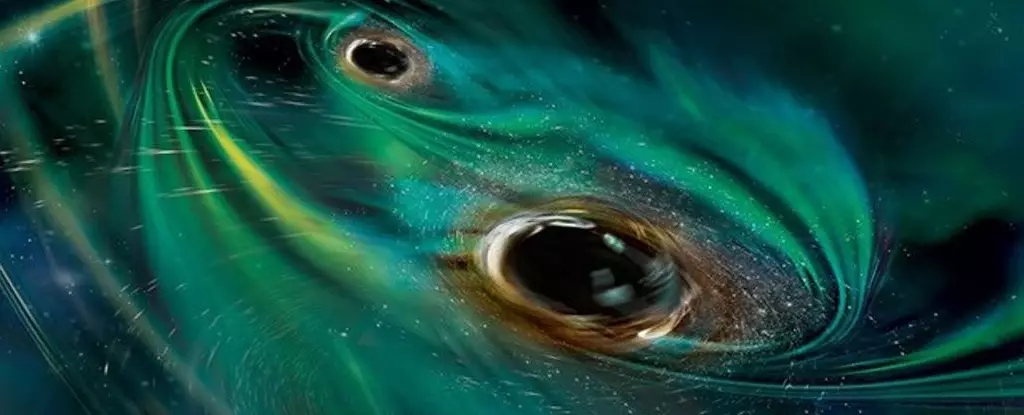In March 2021, astronomers located a remarkable high-energy light burst emanating from a remote galaxy, marking the early stages of what would become a captivating cosmic mystery. Initially classified as a supernova, this event, dubbed AT 2021hdr, presented features that seemed to defy simplistic classification. As the Automatic Learning for the Rapid Classification of Events (ALeRCE) made note of peculiar characteristics, it became apparent that exploring this phenomenon would require deeper investigation.
Fast forward to 2022, and astronomers were startled to observe another light outburst. Utilizing data from the Zwicky Transient Facility (ZTF), researchers discerned a pattern: bursts occurring approximately every 60 to 90 days. Such regularity is atypical of supernova events, prompting scientists to seek alternative explanations for these cosmic signals. Among the leading hypotheses was the concept of a tidal disruption event (TDE), typically resulting from a star being drawn too close to a black hole and subsequently torn apart. However, TDEs usually exhibit a more chaotic signal rather than this observed periodicity.
With the notion of a tidal disruption event seeming less plausible, the research team shifted their focus to a more intricate scenario involving binary black holes. This model hypothesized that a substantial interstellar cloud could be subjected to the gravitational influence of two black holes orbiting each other. Unlike a straightforward destruction of the cloud seen in TDE scenarios, computer simulations indicated that these black holes would interact with the cloud in ways that could produce intermittent bursts of radiant energy as they devoured the material.
Utilizing the Neil Gehrels Swift Observatory, the research team meticulously observed AT 2021hdr, focusing on oscillations in ultraviolet and X-ray light. These measurements aligned with the burst patterns previously recorded by the ZTF, lending strong support to the hypothesis surrounding the binary black hole model. According to the gathered data, the black holes are estimated to possess a combined mass equivalent to around 40 million solar masses and orbit each other approximately every 130 days. Preliminary forecasts suggest that within a period of about 70,000 years, these two significant cosmic entities will eventually merge, culminating in an event that may emit immense amounts of energy.
The significance of studying AT 2021hdr transcends this particular event alone. Without the interstellar cloud crossing paths with these binary black holes, this system might have remained undetected in the vastness of space. The intricate relationship between the black holes and their galactic environment raises fascinating questions about the dynamics of such systems and their evolution over time. As the team continues to observe and gather data, the information gleaned will not only enhance the understanding of AT 2021hdr but also provide insights into the workings of black holes, their interactions with surrounding matter, and the larger context of cosmic phenomena.
Through these ongoing investigations, the journey to demystify AT 2021hdr serves as a testament to the complexity of our universe and the relentless pursuit of knowledge by astronomers around the globe.


Leave a Reply